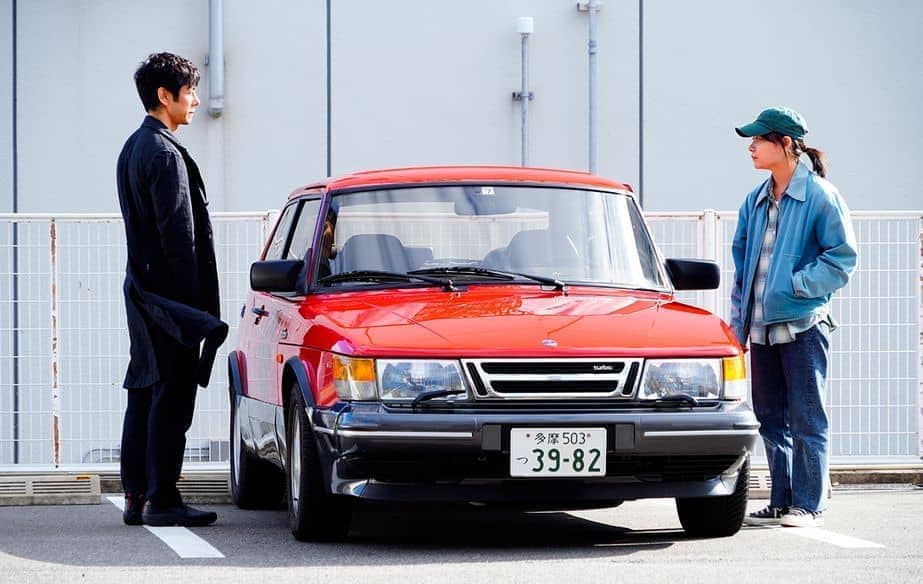Every now and then you watch something that makes you realise how much the likes of Netflix have skewed our viewing habits. While the kings of streaming may have injected more money into Hollywood than ever before, they’ve also stacked the deck yet further in favour of the celebrity blockbuster, the big and the bombastic. Quieter, subtler films all too often disappear into the ether.
You can understand Netflix’s position. What better way to attract the fleeting attention of the scrolling viewer than with a glimpse of the likes of Leonardo Di Caprio or Benedict Cumberbatch? Throw in a big, juicy concept – like an imminent asteroid collision – and things are really looking up. But what about those would-be classics which fail the clickbait test? Can they still make a splash in the streaming age?
For a case in point, look at Drive My Car: the Japanese language film currently tipped to win best international film at the Oscars. An understated and unhurried feature about a recently-widowed actor coming to terms with his loss, it’s one of those films that isn’t designed for the elevator pitch. There’s no big twist or secret here; it’s a film you sit back and absorb, and then think about for a few days afterwards.
Blame it, perhaps, on the palette-deadening effect of watching too much Netflix, but, after watching Drive My Car, I found it hard to put into words what it was about it that I liked so much. Indeed writer Ryusuke Hamaguchi’s narrative approach is at times so gentle and naturalistic that you almost feel that you’re watching the real life events that might later inspire a cinematic outing, rather than the finished film itself. And it’s all the better for it.
Drive My Car has already had the honour of becoming only the sixth film (and the first non-English language effort) to be heralded as the best film of the year by America’s three biggest critical circles. But there’s no doubt that, by turning up the volume on what makes for event-worthy cinema, the streaming networks have made it harder for more introspective efforts to get a look in.
Drive My Car isn’t exactly the kind of film that lends itself to an explosive trailer. Should a casual viewer decide to dip into the film by chance after a glass or two of wine, they may well find their attention wandering. Indeed the first part of the film is taken up by a lengthy prologue, delving into the backstory of its main character. The opening credits don’t roll until around the 40 minute mark. And things aren’t much speedier afterwards.
At times, Drive My Car’s meandering charm reminded me of the Japanese series Midnight Diner – a similarly understated show about the patrons of a late-night izakaya. With its laid-back case studies of various Tokyo characters, the show has been compared to a more wistful take on Cheers. That it has managed to build up a small but dedicated following – and on Netflix no less – suggests that all might not be lost just yet.
Even so, it would be a shame if a consequence of the streaming era was to prolong our viewing habits whilst simultaneously decreasing our attention spans. It’s a thought that’s been plaguing me as I’ve been making my way through Treme – the excellent New Orleans drama penned by David Simon as a follow-up project (in spirit) to The Wire.
Like its predecessor, Treme is a show that rewards paying attention. Yet unlike The Wire, the underlying plots are much less dramatic – revolving not around drug gangs or organised crime, but instead about the enduring fall-out from Hurricane Katrina. And while Treme treats the disaster itself with the solemnity it deserves, much of the storylines are less dramatic. One central one revolves around a local restaurateur struggling to keep her doors open – hardly a recipe for adrenaline-fueled binge watching.
Like Drive My Car, though, Treme is brilliant – not least in being a hundred times more believable and engaging than its more high-octane rivals. Yet despite racking up critical acclaim in its four-year run, this David Simon classic has never been syndicated by Netflix or Amazon Prime. The only place to find it is on HBO Max, where it sits underneath The Plot Against America: Simon’s much flashier adaptation of Philip Roth’s counter-historical novel about a fascist takeover of 1930s America. It’s harder to imagine it being commissioned today: particularly by a lesser-known writer.
The picture in the cinema world is slightly different. Look at the annual lists of the big critics and you’ll see plenty of films that are far closer to Drive My Car than, say, Don’t Look Up. In the last year or so, the likes of Minari, The Father, Passing and After Love – all of which have bagged a very respectable mix of four and five star reviews – would suggest plenty of introspective films are being made. But while they may end up on the big streaming services, they will inevitably be buried under the avalanche of celebrity-studded blockbusters. A cynic might even go as far to suggest that the indie darlings are there to lend artistic credibility to Netflix – a sort of quality-washing if you will – rather than drive viewing hours.
That’s why I’m hoping that Drive My Car can buck the trend and scoop the big prize next month. If so, we can expect to hear lots more about this little cinematic treasure. For goodness knows we love an underdog story. The truth is, though, if more of us were paying attention in the first place, then this one might not have come as such a surprise.






Comments